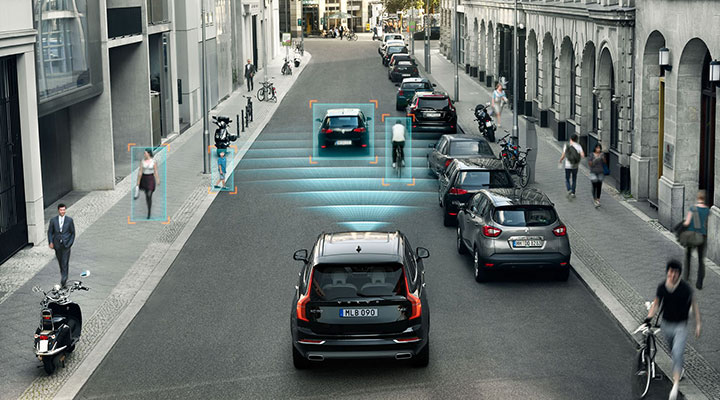Rear-end Crashes Go Way Down When Cars Can Brake Themselves
Originally published by TheVerge.com.
January 28th, 2016
In what may not come as a surprise, vehicles with automatic braking systems are involved in rear-end crashes (that is, accidents in which a vehicle hits a car directly in front of them) at lower rates than vehicles not equipped with the systems, says the Insurance Institute for Highway Safety, or IIHS.
The research focused on Forward Collision Warning (FCW) and Automatic Emergency Braking (AEB), as well as the suite of systems made by Volvo called City Safety, which includes advanced versions of those two technologies. The research examined vehicles from a number of different automakers including Acura, Honda, Subaru and Volvo, which were equipped with FCW and AEB, as well as vehicles that included just FCW or no crash prevention tech at all.
According to the IIHS research, equipping vehicles with both warning and autobraking systems reduced the rate of rear-end crashes by 39 percent and rear end crashes with injuries by 42 percent. That’s an overall reduction in crashes by 12 percent and a reduction in injury crashes by 15 percent.
AUTOBRAKING SYSTEMS REDUCE REAR-END CRASHES BY 39 PERCENT
The report says that Volvo’s City Safety technology, which reduces accidents and injuries by an even higher rate, “appears to be highly effective at reducing rear-end crashes and associated injuries reported to police, even on roadways with speed limits higher than the system’s operating range.” IIHS estimates that, if every vehicle was equipped with low-speed automatic braking technology similar to Volvo’s, around 750,000 police-reported rear-end crashes and 350,000 corresponding injuries could have been avoided in 2013 alone.
Also studied was the effectiveness of collision warning systems without autobraking — that is, systems where the driver is alerted with audible and visual warnings that a crash is imminent. Though they did deliver a modest reduction in rear-end accidents, there was not a statistically significant reduction in injuries from crashes. This may be because while the collision warning systems may be effective in reducing very low-speed accidents, drivers are unable to react in time to avoid higher-speed crashes.
With autobraking systems, even if an accident is unavoidable, having the car slow itself as much as possible before impact can deliver significant reductions in injuries and severity even if an accident occurs. The study also compared Volvos with City Safety to other Volvos that didn’t have the technology equipped in order to eliminate a possibility of a “Volvo buyer’s effect.” There was no indication that the findings were due to Volvo owners simply being safer drivers.
Though systems like City Safety don’t promise to always avoid accidents at higher speeds, the car doesn’t turn off collision warnings and autobrake tech when the vehicle is going faster: it can still slow down itself down and reduce the severity of a crash, or avoid one entirely if the vehicle in front is merely going slower, rather than stopped. “Although City Safety was least effective at speed limits of 50 mph or greater,” says the report, “it still reduced rear-end striking crashes significantly at these speed limits.”
THOUGH CITY SAFETY WAS LEAST EFFECTIVE OVER 50 MPH, IT STILL REDUCED CRASHES SIGNIFICANTLY
“The results reinforce our Vision 2020 which states no one should be killed or seriously injured in a new Volvo by the year 2020, and it underscores having City Safety be standard on all of our vehicles in order to achieve that goal,” says Volvo spokesman Jim Nichols. “We’re very happy with the results, they’re in line with our expectations, and we’ll continue to improve the technology over the next generations of cars.”
What’s it all mean? Autobraking systems stop accidents by stopping cars. For 2016, 40 percent of US vehicle models are offering collision warning systems with automatic braking as optional equipment, with ten automakers pledging to make automatic braking standard equipment in all their vehicles eventually.
The National Highway Transportation Safety Administration, the US government agency that regulates vehicle safety, already acknowledges and encourages the implementation of these systems. And, like airbags and seat belts and anti-lock brakes, these collision mitigation technologies could eventually become required equipment.

